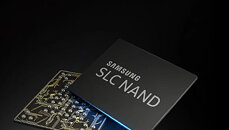"DRAM+" Non-Volatile Memory Combines DRAM Speed With Flash Persistence
Ferroelectric Memory Co. (FMC) and Neumonda have formed a partnership to commercialize "DRAM+," a ferroelectric (FeRAM) memory architecture combining DRAM's speed with non-volatile data retention. The technology substitutes conventional capacitors with ferroelectric hafnium oxide (HfO₂) elements, allowing persistent storage without power while maintaining nanosecond access times. This hybrid technology addresses the performance gap between high-speed DRAM and storage-class memory like NAND flash. Unlike previous European DRAM ventures from Infineon and Qimonda that failed against commodity memory economics, FMC targets specialized applications valuing persistence and power efficiency. The HfO₂-based approach resolves limitations of previous FeRAM memory implementations using lead zirconate titanate (PZT) that couldn't scale beyond megabyte capacities.
Prototypes now demonstrate gigabit-range densities compatible with sub-10 nm fabrication of traditional DRAM made by Micron, Samsung, SK Hynix, and others. By eliminating refresh cycles, DRAM+ reduces static power consumption substantially compared to traditional one-transistor/one-capacitor DRAM cells. Primary applications include AI accelerators requiring persistent model weights, automotive ECUs with immediate startup requirements, and power-constrained medical implants. Neumonda will contribute its test platform suite Rhinoe, Octopus, and Raptor for electrical characterization and analytics at lower capital costs than standard semiconductor test equipment. No production timeline has been announced for commercial DRAM+ products.
Prototypes now demonstrate gigabit-range densities compatible with sub-10 nm fabrication of traditional DRAM made by Micron, Samsung, SK Hynix, and others. By eliminating refresh cycles, DRAM+ reduces static power consumption substantially compared to traditional one-transistor/one-capacitor DRAM cells. Primary applications include AI accelerators requiring persistent model weights, automotive ECUs with immediate startup requirements, and power-constrained medical implants. Neumonda will contribute its test platform suite Rhinoe, Octopus, and Raptor for electrical characterization and analytics at lower capital costs than standard semiconductor test equipment. No production timeline has been announced for commercial DRAM+ products.































































